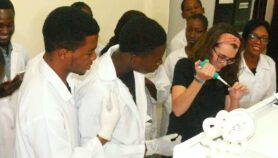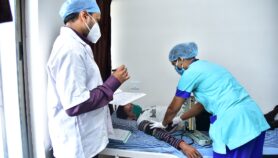By: David Dickson
Send to a friend
The details you provide on this page will not be used to send unsolicited email, and will not be sold to a 3rd party. See privacy policy.
Much has been said and written in recent years about the enormous potential offered by information and communication technologies (ICTs) for the speedy and efficient communication of scientific research results. This potential is as promising for developing as it is for developed countries. In both instances, however, there has often been a substantial gap between theory and practice.
It is therefore reassuring to find one experiment that seems, even if only in a relatively limited way at present, to be generating positive results, with implications for the whole of the developing world. This is a network of electronic scientific publications that has been set up jointly by the science foundation of the state of Sao Paulo (FAPESP), and the Latin American and Caribbean Center on Health Sciences Information (BIREME).
The purpose of the project, known as the Scientific Electronic Library On-line (SciELO), has been not merely to produce electronic version of leading scientific journals from the region, but also to try to raise their international profile within the scientific community. This is done in two ways: firstly by ensuring that access to the electronic journals (including the downloading of individual papers) is free of charge; and secondly by providing access through a single electronic portal, avoiding the need to seek out separate websites for each publication.
There is already substantial evidence that — perhaps unsurprisingly — going electronic can significantly increase the visibility a journal within the regional and international scientific community. Now comes further evidence showing that not only can its profile been significantly raised, but so too can its impact factor. This is the measure, based on the citation rates of individual articles, that is widely used to judge how scientifically important the journal is seen to be. Indeed, a study carried out by Wladimir J. Alonso and Esteban Fernández-Juricic, published in this week's Nature, found that the impact factor of five Brazilian journals has more than doubled since their inclusion in SciELO.
Given this promising result, it is tempting to draw the immediate conclusion that the SciELO model should be rapidly adopted as widely as possible, as a way of raising the visibility of scientific activities carried out (and published in) developing countries. Certainly it gives support to the argument that raising the scientific prestige of indigenous publications can start a 'virtuous circle': the greater the international impact of such publications, the more leading scientists from the country (or region) involved will be tempted to publish in them, and the more this will enhance the status of such publications, etc.
Before getting too carried away, however, two important caveats need to be remembered. One is that the apparent success enjoyed by the journals included in the SciELO project, of which there are currently about 100, is partly due to the fact that universities and research institutes in Latin America enjoy a relatively high level of fast electronic connectivity compared, for example, to similar institutions in Africa or many parts of Asia. Where such connectivity cannot be taken for granted, the results are likely to be significantly more equivocal.
The second caveat is that, even without traditional printing and distribution costs, the process of producing electronic versions of scientific journals and putting them together in a regional network remains substantial. Which means that carrying this out for even a limited number of journals, as well as allowing free access to them, has to be heavily subsidised. Other organisations may not be as fortunate as SciELO in finding appropriate sponsors keen to develop a model for regional scientific publication that, to some extent, runs counter to various mainstream trends in scientific publishing.
Even with these caveats, however, there are good reasons for other nations and regions to study the SciELO experience closely, and learn how it might be adopted to their particular needs and resources.
When the project was set up, a key goal was to help overcome a phenomenon known as 'lost science' — a description of the vast amount of research that is carried out in developing countries but which, for a variety of reasons (including linguistic and economic ones) never finds its way into the mainstream scientific literature. Even the most enthusiastic of SciELO's supporters will agree that there is still a long way to go; in Latin America, for example, the number of journals covered by the project remains only about 1 per cent of the total. But the results published this week indicate that at least SciELO appears to be moving in the right direction.
© SciDev.Net 2002
More on Capacity building

Script media release
Journalists offered ‘big break’ mentoring opportunity from Radio Nigeria
03/04/19












